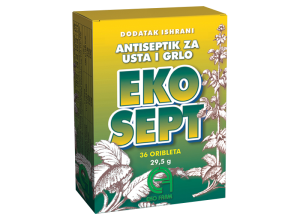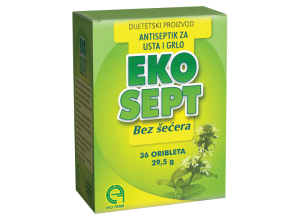What is sage essential oil?
Sage oil is the essential oil made from the herb Salvia officinalis (sage, garden sage, or common sage), which is a perennial, evergreen subshrub, that can grow up to about 60cm (2 feet) high, with a woody base, soft gray-green oval leaves and a mass of blue or violet flowers. It is a member of the family Lamiaceae and is native to the Mediterranean region, though it has naturalized in many places throughout the world. The name sage is derived from the Latin word ‘salvare’ which means ‘heal’ or ‘save’, which indicates a long history of medicinal use. The Chinese believed that it cured sterility, while the Romans believed it cured many other health conditions. During the Middle Ages people believed it was good for brain, senses and memory, as well as for treating inflamed gums and mouth infections. Today, sage essential oil is widely used as a compound in various dietary supplements, skin and hair cosmetic products, as well as in food flavouring and fragrance industry.
Chemical composition
Sage essential oil is extracted from the dried leaves by steam distillation, which is a special type of separation process for temperature sensitive materials. The main chemical components of sage essential oil are α-thujone, β-thujone, camphor, 1,8-cineole, borneol, bornyl acetate, linalool, myrcene, limonene, α-pinene, β-pinene, camphene, β-caryophyllene, p-cymene, α-terpinene, salviol, thujanol and α-humulene. Many studies have shown that environmental conditions (temperature, day length, light, soil), climate conditions and seasonality have a great influence on its quantitative composition, which leads to a pattern of variation in plant metabolites, that is generally repeated during the vegetative cycle.
Biological activity
The health benefits of sage essential oil can be attributed to its anti-inflammatory, antibacterial, antifungal, antiseptic, antioxidant, astringent, expectorant, carminative, cholagogue, choleretic, emmenagogue and cicatrisant properties. The carriers of antimicrobial activity are α-thujone, camphor and 1,8-cineole, which are shown to be more effective on gram-positive than gram-negative bacteria. Nowadays, with the alarming incidence of antibiotic resistance in bacteria, there is a need for effective alternatives. It is therefore of interest to reexamine the way in which sage essential oil delay or inhibit the growth of pathogenic bacteria and apply them to actual practice.
Therapeutic uses
Sage essential oil is externally used as a compound in various dietary supplements and skin and hair cosmetic products for:
- treating upper respiratory tract infections (tonsillitis, pharyngitis, laryngitis)
- treating oral mucous membranes and gums infections (gingivitis, stomatitis, mouth ulcers)
- healing of scars, stretch marks, wounds and bruises
- treating dandruff and dry, itchy scalp
- reducing large pores on skin
- treating dermatitis
- reducing vaginal discharge
- repelling insects
Sage essential oil is internally used as a compound in various dietary supplements for:
- treating digestive disorders (such as dyspepsia, flatulence and bloating)
- stimulating digestion and a bad appetite
- excessive sweating and salivation
- relieving night sweats and other uncomfortable symptoms of menopause
- treating dysmenorrhoea (painful menstrual cramps)
- reducing breast milk production
- treating anxiety and depression
Contraindications and precautions
Sage essential oil is a powerful oil and should be used with great care and under professional supervision. It should not be used during pregnancy and nursing, as it may cause miscarriage and decrease of breast milk supply, if taken in large doses. People suffering from epilepsy, or any form of seizures should avoid it, due to the convulsant potential of thujones. Diabetics should watch for signs of hypoglycemia while consuming sage oil and frequently monitor their blood sugar levels.
by: mr ph Iva Majstorović, posted on October 23, 2014
 Ekosept is a dietary supplement based on sage and peppermint essential oils in the form of refreshingly sour tablets.
Ekosept is a dietary supplement based on sage and peppermint essential oils in the form of refreshingly sour tablets.
Sage essential oil soothes irritation of the mouth, throat and vocal cords. It is obtained from the dried leaves of Salvia officinalis, commonly known as common or garden sage. The name of the plant derives from the Latin word “salvare”, which means to treat, cure, save, and testifies to the long history of its medical use in human population. Carriers of the antimicrobial activity of sage essential oil are α-thujone, camphor, and 1,8-cineole.
 Ekosept without sugar is a dietary supplement based on sage and peppermint essential oils in the form of refreshingly sour tablets with low nutritional value. Their use is recommended to broad age group. Active ingredient in Ekosept without sugar tablets represents a combination of essential oils isolated from two plants from our regions – sage, and peppermint. Their centuries-old successful use in the treatment of respiratory tract infections determined us to use their healing power in the form of orally dissolving tablets.
Ekosept without sugar is a dietary supplement based on sage and peppermint essential oils in the form of refreshingly sour tablets with low nutritional value. Their use is recommended to broad age group. Active ingredient in Ekosept without sugar tablets represents a combination of essential oils isolated from two plants from our regions – sage, and peppermint. Their centuries-old successful use in the treatment of respiratory tract infections determined us to use their healing power in the form of orally dissolving tablets.
